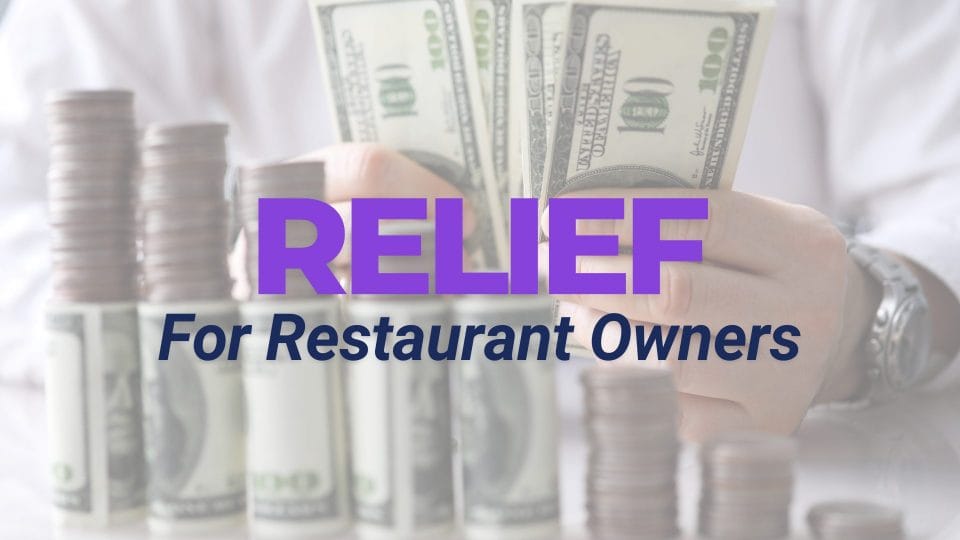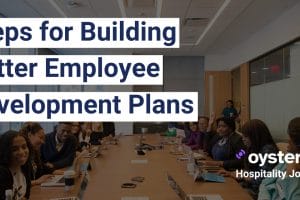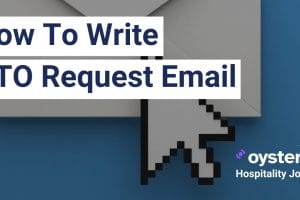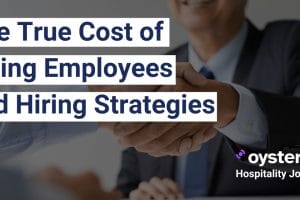The pandemic forced one in six restaurants to close permanently. Restaurant owners need relief now more than ever. The Restaurant Revitalization Fund provided $28.6 billion in support, yet many business owners still struggle to find enough financial help.
PPP loans might be familiar to you, but several overlooked grant programs and funding sources remain unused. Government and private organizations offer substantial financial support that most restaurant owners aren’t aware of.
In this article, you’ll discover hidden funding opportunities to help you maximize multiple relief programs and keep your restaurant thriving. Don’t leave money on the table—find out which programs you qualify for today!
Common Restaurant Relief Programs You Already Know
“Businesses with 500 or fewer employees are eligible for PPP loans. This includes full-time, part-time and temp employees that are working through an agency.”
The federal government created two major relief programs that became a lifeline for restaurant owners during the pandemic. Restaurant owners who understand these simple programs can explore many more funding opportunities.
PPP loan basics
First-time borrowers could receive forgivable loans up to $10 million through the Paycheck Protection Program. Restaurant owners just needed to spend at least 60% of funds on payroll costs to qualify for complete forgiveness. The program required business owners to maintain pre-crisis staffing levels. They also had to keep at least 75% of previous wages for employees who earned under $100,000 annually.
PPP loans could fund payroll, rent, utilities and other simple business expenses. Restaurant owners gained more flexibility to qualify for forgiveness as the program offered an extended 24-week period to use the funds.
Restaurant Revitalization Fund overview
The Restaurant Revitalization Fund gave grants up to $5 million per location with a maximum of $10 million per business. These grants didn’t require repayment as long as businesses used them for eligible expenses before the specified deadline.
The program saw huge interest with over 278,000 applications asking for more than $72 billion in funding. The RRF gave priority to businesses owned by women, veterans and socially disadvantaged individuals during the first 21 days. Business owners could use these funds for payroll, rent, utilities, maintenance, outdoor seating construction and food costs.
Lesser-Known Government Grant Programs
“The program has $28.6 billion for grants to eligible entities, including $5 billion earmarked for eligible entities with 2019 gross receipts of $500,000 or less.”
Restaurant owners can find many funding sources beyond popular federal assistance programs at state and local levels. Your chances of approval are higher with these programs because they have fewer applicants.
State-specific restaurant grants
The Restaurants Care Resilience Fund in California guides restaurant support by offering $5,000 grants to independent restaurants. This program has helped over 2,300 workers and 1,600 independent restaurants since 2017. The program’s success with diversity stands out – 66% of recipients are women-owned businesses and 77% belong to people of color.
San Francisco’s Accessibility Grant helps restaurant owners with up to $10,000 to boost their establishment’s accessibility. Your business needs to meet certain criteria: registration in San Francisco, less than $2.5 million in gross revenue and a workforce under 100 people.
Local economic development funds
Restaurant owners can get local financing opportunities and workspace solutions through the Economic Development Administration (EDA). Your local Small Business Development Center (SBDC) is a vital resource that provides business mentoring and networking connections.
Rural areas with populations under 20,000 can benefit from the Community Facilities Direct Loan & Grant Program. The most financially challenged communities can receive grants covering up to 75% of eligible costs.
Small business innovation grants
Restaurants learning about technological advancements can find great opportunities through the Small Business Innovation Research (SBIR) program. The Small Business Technology Transfer (STTR) program supports research partnerships between restaurants and non-profit research institutions.
Restaurants competing with out-of-state locations can look into the Texas Enterprise Fund’s performance-based grants. These grants come with specific requirements:
- Capital investment commitments
- Job creation targets
- Demonstrated financial stability
- Strong local community support
Private Funding Sources Most Owners Miss
Private organizations provide substantial funding opportunities that most restaurant owners might miss. These programs work alongside government assistance and come with flexible terms and specialized support.
Restaurant industry association grants
The National Restaurant Association Educational Foundation helps Chefs, Line Cooks and other restaurant workers through targeted programs. The foundation runs several initiatives that include job training, culinary arts education and apprenticeships for military service members who want to start restaurant careers.
The Restaurant Employee Relief Fund has given out more than $21.5 million in one-time grants and helped over 43,000 eligible restaurant workers. These grants focus on keeping skilled staff members during tough financial times instead of just supporting business owners.
Corporate-sponsored relief programs
DoorDash’s Restaurant Disaster Relief Fund gives $10,000 grants to restaurants hit by natural disasters. Your establishment needs to meet these requirements to qualify:
- No more than three locations
- Less than $3 million in revenue per location
- Fewer than 50 employees per location
- Open for at least six months
The American Express Backing Small Businesses program gave $10,000 grants to 500 small businesses, and 25 of these recipients got extra $30,000 improvement grants. Comcast Rise launched their small business grant program right after, offering $5,000 grants plus business consultation services and technology upgrades.
The Venmo Small Business Grant program helps smaller establishments by giving 20 entrepreneurs $10,000 grants. Businesses need annual sales under $50,000 and no more than 10 employees to qualify. These corporate programs usually have shorter application windows and make funding decisions faster than government programs.
How to Stack Multiple Relief Programs
You need careful planning to maximize financial support by combining multiple relief programs. A good understanding of how funding sources work together can substantially increase your total aid package.
Understanding program compatibility
The Restaurant Revitalization Fund cannot be combined with Shuttered Venue Operator Grants. You must choose between these two programs based on your business model. PPP loans and RRF grants can work together, but the PPP amount will be deducted from your RRF calculation.
Your CPA or business advisor should check your eligibility for each program. Some programs have specific restrictions that depend on your business’s size, revenue loss or ownership structure.
Maximum benefit strategies
A detailed budget should match each funding source with specific eligible expenses. Using grant money for unauthorized purposes could trigger repayment requirements or federal investigations.
Programs like RRF require you to track every dollar spent through their application portal. You can only use funds for principal and interest payments when dealing with business debt service, not to pay off entire loans.
Final Steps
Restaurant owners often focus only on major federal programs, but countless hidden funding opportunities exist at state, local and private levels. Smart financial planning lets you combine multiple relief programs that work together. This approach opens up more possibilities than limiting yourself to a single source.
Your state government, industry associations and corporate sponsors offer lesser-known grants worth exploring. A qualified financial advisor can help you meet eligibility requirements and make the most of available funding without breaking program rules.
Note that persistence pays off in the search for restaurant relief. Programs often have rolling deadlines or multiple funding rounds throughout the year. Today’s research and careful planning can secure the financial support your restaurant needs to thrive tomorrow.
FAQs About Relief for Restaurant Owners
Yes, there are several lesser-known grant opportunities for restaurant owners. These include state-specific programs like California’s Restaurants Care Resilience Fund, local economic development funds, and corporate-sponsored relief programs such as DoorDash’s Restaurant Disaster Relief Fund and American Express Backing Small Businesses program.
Yes, restaurant owners can often stack multiple relief programs. However, it’s crucial to understand program compatibility and create a strategic funding timeline. Some programs, like the Restaurant Revitalization Fund and PPP loans, can work together but may affect the calculation of funds received.
Most relief programs cover a range of expenses including payroll, rent, utilities, maintenance, outdoor seating construction, and food costs. However, specific eligible expenses may vary between programs, so it’s important to review each program’s guidelines carefully.
Yes, several programs cater to small, independent restaurants. For example, the Venmo Small Business Grant program targets establishments with annual sales under $50,000 and a maximum of 10 employees. Additionally, some state and local programs prioritize independently owned restaurants.
To maximize chances of receiving relief funds, restaurant owners should research a variety of funding sources, including federal, state, local, and private programs. It’s also beneficial to work with a qualified financial advisor, create a detailed budget for fund usage, and maintain thorough records of all expenses.

Written by Lidija Misic
Lidija holds a BA in English Language and has lived in five different countries, where she has worked in various roles, including as a flight attendant, teacher, writer and recruiter. Her biggest passion is crafting great content and reading. She is particularly passionate about creating punchy copy that inspires people to make positive changes in their lives.

Reviewed by Marcy Miniano
Marcy is an editor and writer with a background in public relations and brand marketing. Throughout her nearly decade-long career, she has honed her skills in crafting content and helping build brands across various industries — including restaurant and hospitality, travel, tech, fashion and entertainment.




